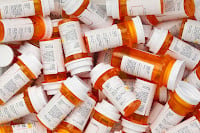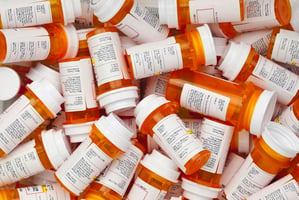New Stimulant Prescriptions for ADHD Climbed During Pandemic, Study Shows

While new prescription rates for most medications to treat behavioral health conditions was steady during the COVID-19 pandemic, prescriptions for attention-deficit/hyperactivity disorder (ADHD) medications rose sharply, a study published yesterday in JAMA Psychiatry found. The largest increases in ADHD medication prescriptions were among women and people aged 20 to 39.
“During the COVID-19 pandemic, widespread concerns arose regarding increased behavioral health needs and unprecedented challenges in health care access,” wrote Grace Chai, Pharm.D., M.P.H., of the Food and Drug Administration’s Center for Drug Evaluation and Research and colleagues. “[P]andemic-related stressors and early mitigation measures such as stay-at-home orders, virtual schooling, and economic stressors contributed to concerns of increased behavioral health needs.”
Chai and colleagues analyzed data from the National Prescription Audit, which captures 94% of prescriptions dispensed at outpatient pharmacies in the United States. Drugs in five classes were included: antidepressants, benzodiazepines, Schedule II stimulants, nonstimulant ADHD drugs, and buprenorphine labeled as a medication for opioid use disorder. To capture changes in medication initiation before and during the COVID-19 pandemic, the authors looked at new prescriptions dispensed from April 2018 to March 2022.
In the two years before the pandemic (April 2018 to March 2020), 51.5 million prescriptions in the five classes were dispensed compared with 54 million during the pandemic (April 2020 to March 2020). Additional results include the following:
- Compared with the two years before the pandemic, rates of prescriptions dispensed during the pandemic increased by 10% for antidepressants, 14% for Schedule II stimulants, and 32% for nonstimulant ADHD drugs. The authors noted that the increased rates of Schedule II stimulants and nonstimulant ADHD drugs were significant and exceeded prepandemic trends, whereas the increased rate of antidepressant prescriptions followed the increasing trend that started before the pandemic’s onset.
- Among patients aged 20 to 39, Schedule II stimulant prescriptions increased by 30%, and nonstimulant ADHD drug prescriptions increased by 81%.
- Among women, Schedule II stimulant prescriptions increased by 25% and nonstimulant ADHD drug prescriptions increased by 59%.
- For all patients, the rates of benzodiazepines and buprenorphine decreased by 9% and 2%, respectively.
- Prescriptions written by nurse practitioners increased across all drug classes, ranging from 7% for benzodiazepines to 78% for buprenorphine.
“The lack of significant changes in the trends of incident prescriptions dispensed for antidepressants, benzodiazepines, and buprenorphine … during the COVID-19 pandemic suggests that a unique set of drivers may have contributed to the differential use of ADHD medication,” the authors wrote. “Additional research is needed to differentiate increases due to unmet need vs overprescribing, highlighting the need for further ADHD guideline development to define treatment appropriateness.”
For related information, see the Psychiatric News articles “Stimulant Prescriptions Spiked During Pandemic, CDC Finds,” and “Months Later, Stimulant Shortage Persists.”
(Image: Getty Images/iStock/smartstock)
Look for Your 2024 APA Election Ballot!
All voting members should have received their electronic ballot for APA’s 2024 election by now. If you haven’t seen yours yet, take a moment to look for it in your email inbox and vote. You can also vote on the APA election website by entering your APA username and password. Detailed information about the candidates and campaigning guidelines can also be accessed on the site. Help shape the future of APA by casting your ballot today.





